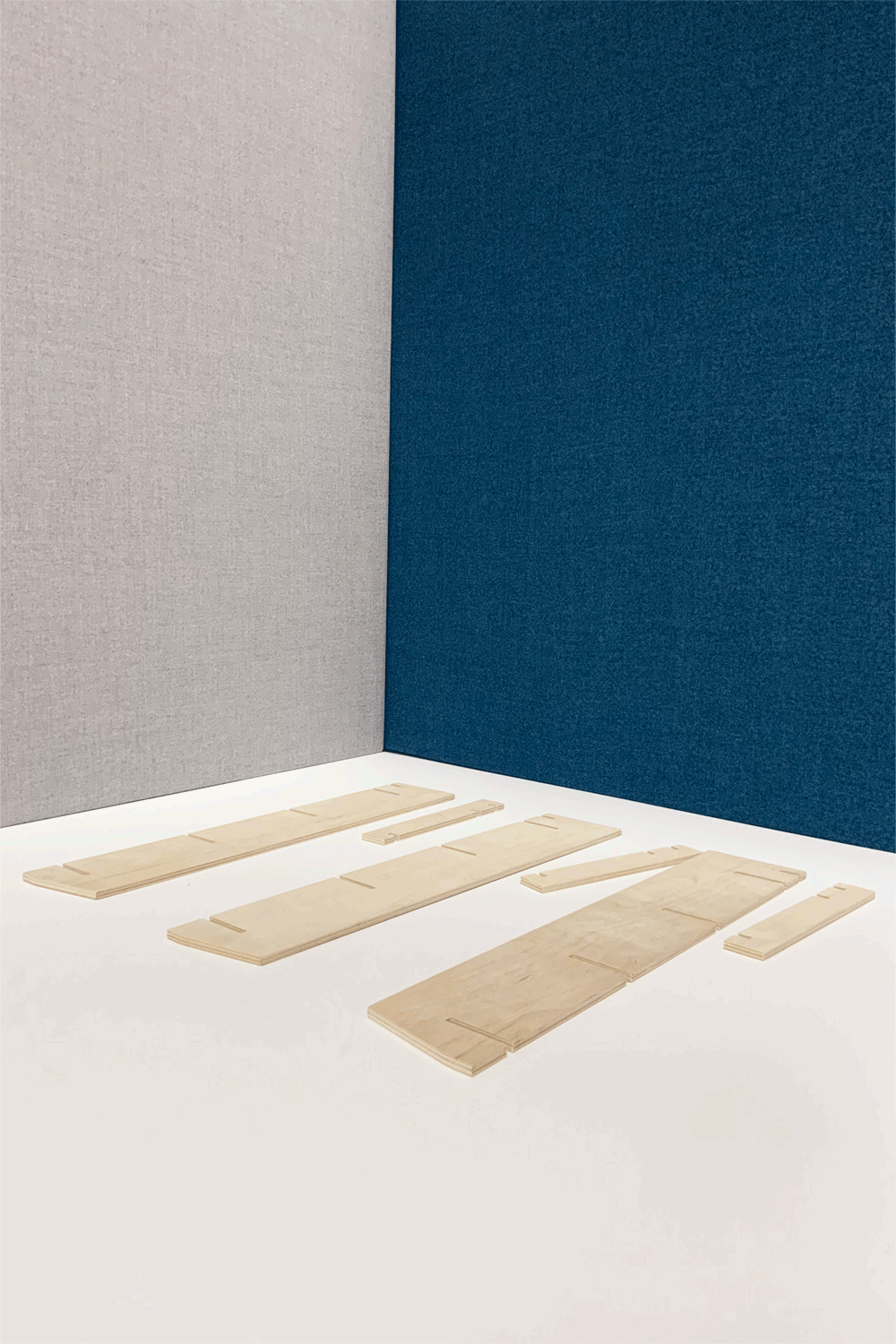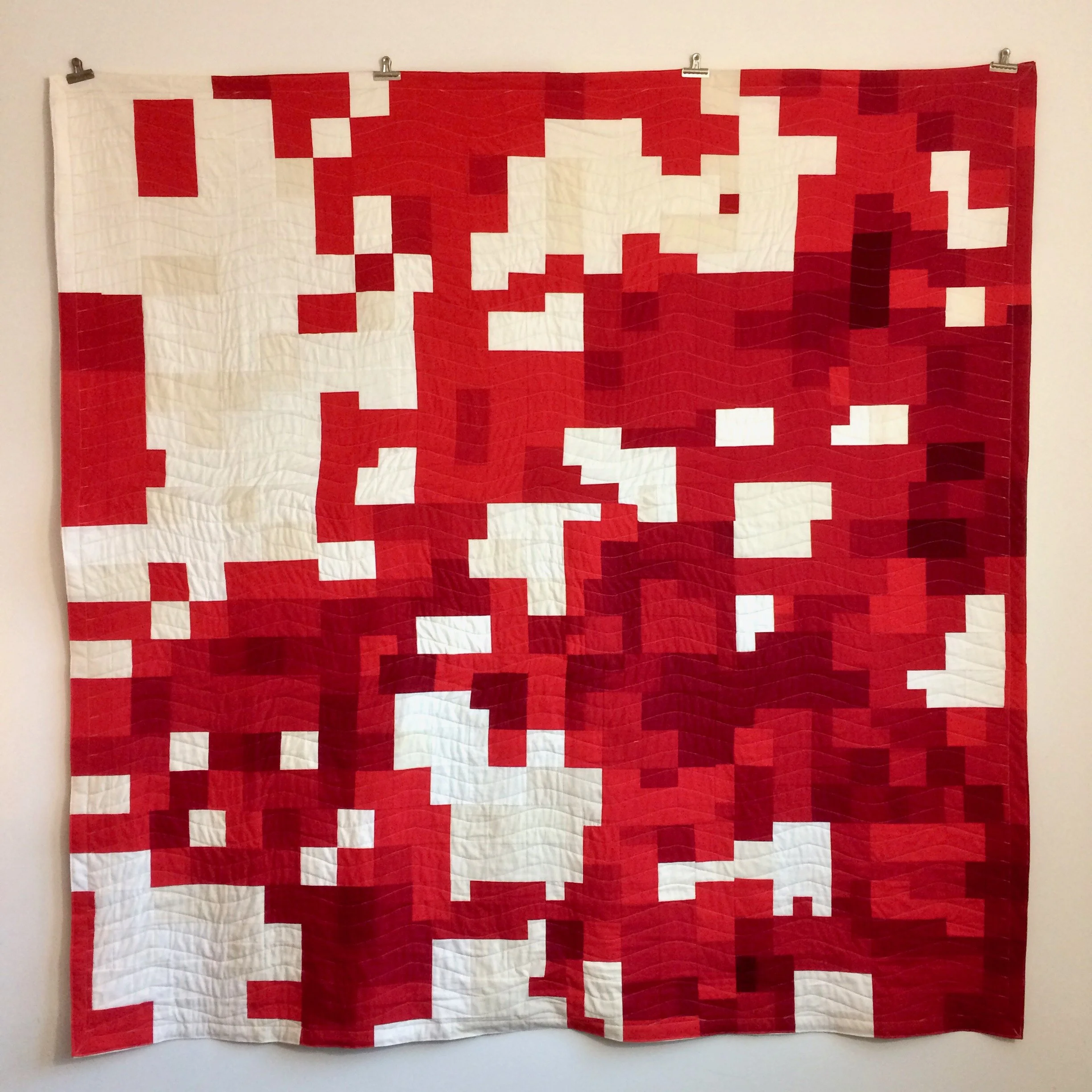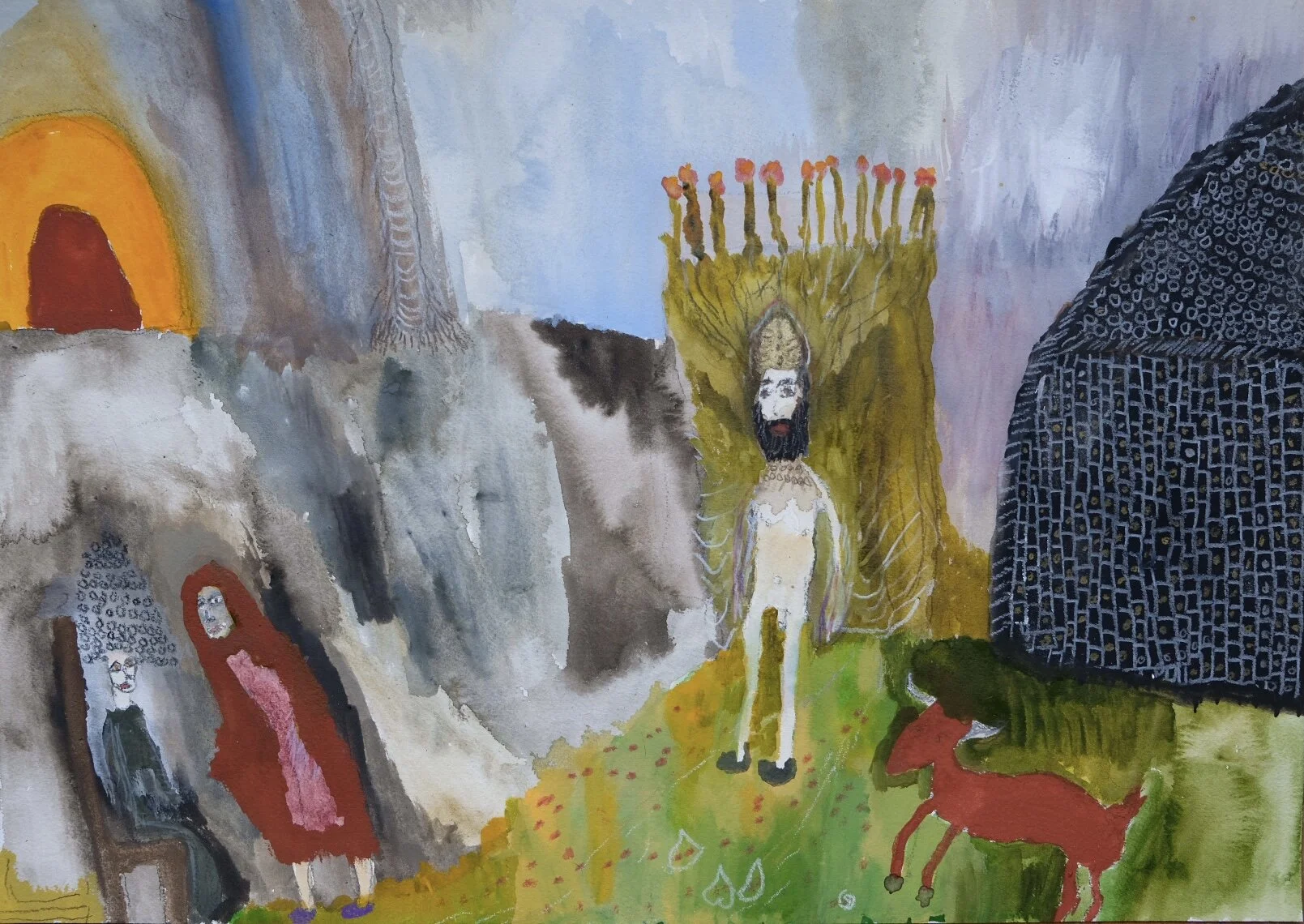Giles Timms
Giles Timms, a digital artist based in Orono, Maine, combines media and genres into hybrid art. His work borrows from current events, specifically the terrific and terrifying absurdities of modern life, and he translates his impressions into wistful, animated films.
In each animation, Timms casts a leading protagonist, or “Creep” as he refers to them, into environments that possess a familiarity with local settings yet equally surreal architecture.
His Creeps—adopted from the Bulgarian word “Крип”—are grotesque and beautiful homunculi, or very small human or humanoid creatures. His animations follow the Creeps as they explore the vagaries of our human condition. Timms shared, “My hybrid art speaks about what it is to be human, in spite of a world that appears increasingly absurd.”
With the erosion of certainties and the accumulating anxiety of a world with divisive politics, systematic racism, ecological and climate distress, and the COVID-19 pandemic, Timms creates alternate worlds that offer moments of escape and insight, to open windows in the given world that allow us to see outside it. His most recent film, Interrupted Dream, begins with his signature Creep cast amongst the city. The caricature’s heart is hollow, perhaps suggestive of yearning, loss, or hope. Within a hollow head, its imagination surges like a green sea. The Creep sees into an open window, where it observes other caricatures in despair. As the film concludes, the frame is interrupted and shifts altogether; the viewer now assumes the role of the Creep who navigates the dreamscape.
Watch the March 18, 2021 “Conversations with Maine Artists in a ______ Time” with artists Greta Bank, Celeste Henriquez, Gregory Jamie, veronica a perez, and Giles Timms

“Giles Timms’ spiritual dreamscape drifts the viewer in and out of a seemingly universal urban setting. The highly skilled animations at the forefront of the video reference the fear of the unknown, the anguish of loss, and more generally, the overwhelming heaviness of modern life. Perhaps, a perfect abstract for 2020.”
- Cody Castle-Stack, Untitled juror
EXPLORE MORE ARTWORKS FROM UNTITLED, 2020
Rachel Church responds to her own lived experience to bring attention to issues that have more importance than first meets the eye, both politically and personally. In 2020, she responded to the lack of compassion and empathy exhibited toward other human beings in the United States with the creation of Seeing Red #2.
Interdisciplinary artist Evelyn Wong works with themes of identity, race and gender, community, and storytelling. Wong often researches histories and socio-political issues that have affected or are affecting Asian Americans to inform her art. In Mooncakes for Democracy, she recalls and updates an ancient tale about love and betrayal to coincide with the 2020 United States presidential election.
In 2020, sculptor and furniture designer Charles Schreiber thought about making things that were compact, easy to transport, and mobile. He shared, “Nobody knows what’s going to happen. Things feel so insecure now for so many people that being able to pull up stakes quickly and move seems to be something to consider.”
Sculptor veronica a perez utilizes artificial hair and flowers as well as other kitschy materials that serve as personal and universal commentaries on contemporary Latinx issues. She explores the hybridization of ancestry, identity and culture as well as the fragile nature of beauty ideals in thought-provoking sculptures.
Titi de Baccarat identifies as a painter, sculptor, clothing designer, jeweler, and writer. He began to practice art in Africa in a very complex political context and he was forced to flee his country, Gabon, with only the wealth of his artistic ability. He found refuge in Maine and he has lived in Portland since February 2015.
A pile of dishes, a mashup of cultures and time periods—this installation of Joshua Reiman’s speaks to the long history of human oppression and colonization as embodied through food and serving vessels. Ironically, even as we try and wash away these stains, they remain and continue to live on.
Eleanor Kipping explores the experience of the Black diasporic female body in the United States through the examination and deconstruction of historical and contemporary narratives.
In 2020, Celeste Henriquez reflected on her role as a parent and caregiver in her abstract paintings. Her daughter, Abigail, is a young adult with a profound intellectual disability and requires the artist’s care. These two paintings are from a body of work titled Guardians, which began in 2020 pre-pandemic when her daily life combined managing her care from a distance and painting in her studio; then Abigail came down with the coronavirus in early March and strangers cared for her at a health facility.
Material, process, and intuition are core concepts in the sculpture of Steve Bartlett. Intentionally ambiguous, his work draws on elements of abstraction, the human body, and nature.
The print We Gonna Be Alright is a digital piece created during the first two weeks of quarantine, when every day was clouded with an uncertainty that permeated throughout every facet of life.
Greta Bank’s sculpture, performances, and installations often use both topical and historical content to provoke social inquiry. Bank describes her work as visual essays, positioning her audience to reflect on diverse matters such as environmental corruption, mass consumption, and social constructs.
The abstract paintings of Henry Austin aim to lay bare what it means to him to be alive. He likens the intuitive act of painting to dance, recalling the performative nature of 20th-century action painters.
Anna Dibble’s winsome world of imaginary climate-based landscapes speaks to people experiencing both vulnerability and resilience. We see them in boats on what she calls ‘early oceans’ and we see them walking alone with a dog in beautifully spare but perhaps wounded surroundings.
Performance artist and sculptor Deborah Wing-Sproul reflects on social, cultural, economic, and political inequities amplified by the events of 2020 in her new work, Meet me at the pool. This performance and sculpture are informed by community lockdowns and isolation as well as the tension between presence and absence. The swimming pool—a place of social exclusivity and a sign of wealth and leisure—is the starting point of investigation.
Christopher Dudley based this quilt off an infographic about government benefits in The New York Times on February 12, 2012. The United States map illustrates areas (based on a state’s counties) that rely or don’t rely on government benefits. Dudley found it saddening that the U.S., supposedly the richest nation of the world, has such disparity between rich and poor and that social programs for helping people in need are viewed so divisively. He turned to quilting to convey his dismay.
Like many families in 2020, Gross’ family life shifted when the pandemic hit Maine. During these six months together, Gross felt the ordinary and extraordinary weave together: a birthday celebration, the Fourth of July, a Black Lives Matter protest and march organized by students at South Portland High School, among others.
We find mythic beings, whose bodily forms are androgynous or otherwise unspecified, caught in nightmarish landscapes—some wear masks and tease animals, others float in rivers or baths, perhaps conversing with spirits.
In Maine, Enrique Mendía began to experiment with making and telling tales through photographs, words, and film. His affection for fiction and for photography as a tool for documentation coalesce in Loveshack, a loose-leaf book about a love story.
Meghan Mitchell identifies as an artist, a woman, daughter, sister, and more recently, mother. Her photography explores the meaning and significance of universal human interactions and experiences by recreating moments and inserting herself into them.
Elijah Ober’s video practice honors small creatures as proxies of encompassing ecosystems and histories. In his work, the artist co-opts, subverts, and reveres the slippery power of digital images to embody themselves and alter our physical and social structures.
In her work, Ashley Page explores the vulnerability, grace, and complexities of the Black experience. She believes art is a vessel used to present larger conversations about representation and visibility of the African American image, intellect, and spirit. Employing paper, fiber, and steel in her work, she envisions a world where individuals are given the autonomy to represent themselves.
The relationship between site, story, and mobility fuels a wide range of research and production, including the relationship between natural histories, myth, and individual story. For Poitras Santos, walking is a form of listening to a site and giving it agency in an age of climate change.
A few years ago, she embarked on a body of figurative works, which is a longstanding tradition by Maine painters. Stanton credits this shift in her painting practice to her increased involvement with social media as well as the devolving political climate of the past four years. She likens her new painting endeavors to a “fascinating adventure: like dreaming awake.”
Giles Timms, a digital artist based in Orono, Maine, combines media and genres into hybrid art. His work borrows from current events, specifically the terrific and terrifying absurdities of modern life, and he translates his impressions into wistful, animated films. In each animation, Timms casts a leading protagonist, or “Creep” as he refers to them, into environments that possess a familiarity with local settings yet equally surreal architecture.
Artists’ Rapid Response Team! (also known as ARRT!) is a collective of year-round members of the Union of Maine Visual Artists (UMVA). UMVA is dedicated to upholding the dignity of artists, while creating positive social change through the arts.

























